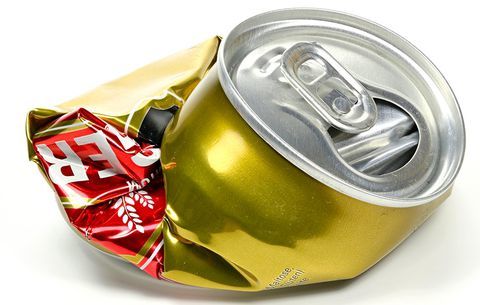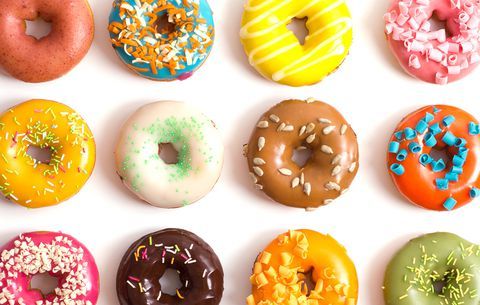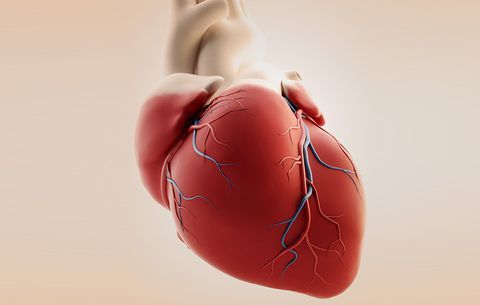Leslie Glass's Blog, page 311
December 15, 2018
Eight Addiction Myths
Harm reduction treatments and strategies like long-term MAT and reducing painkiller prescriptions have been accepted across the board, from the AMA and the National Institute on Drug Abuse (NIDA) and other leading addiction-as-disease advocates to prominent harm reduction groups.
Yet these so-called harm reduction approaches have failed to stem the tide of drug deaths. Their failure is because they identify and address addiction as a brain disease to be treated medically. There is no sign that the failure of this perspective is causing or will cause any prevailing actors to change their thinking. They simply can’t.
In my recent presentations, I have begun by warning audiences that I will undercut all of their fundamental beliefs about addiction — but that if that prospect seemed alarming, they shouldn’t worry. They wouldn’t change their thinking no matter what evidence I presented, even if the consequences of their not doing so took the form of continuing spiraling drug death rates.
I began speaking in Galway before the Western (Ireland) Region Drug and Alcohol Task Force by establishing four criteria on which to decide the truths of addiction: common-sense logic, evidence, personal experience, and meaning. I then confronted eight myths about addiction imported largely from the U.S.
Myth I: Opioids Are the Lone Cause of Opioid Addiction
I asked the group of 180 people whether any of them had ever taken a painkiller. Virtually every person in the audience raised their hand. I then asked if any of them had become addicted. No one raised their hand.
“Isn’t that remarkable?” I asked. “Opioids are the sine qua non of addiction. Experts like Sam Quinones in his bestseller Dreamland detail how the opioid molecule envelops the receptors in the brain and nervous system, trapping even the most resilient people in addiction. Yet not one person here who was exposed to this molecule became addicted. WHY didn’t you become addicted?”
I got less of a response – none – than I had hoped for. I prodded further: “Isn’t the question of who becomes addicted, and under what circumstances, the fundamental question we need to ask? Do you have no ideas about why none of you became addicted?”
One man finally said, “I stopped taking the painkiller when my pain went away.”
“You mean people quit using painkillers when they no longer feel pain?” I reacted, with mock incredulity.
That was all I got. Later, my host at the conference, Liam O’Loughlin, told me over dinner how he had badly hurt his hand, but stopped taking the powerful opioid and anti-inflammatory he had been given after just three days. “I didn’t like becoming groggy at two in the afternoon.” In other words, he had other matters to attend to with which narcosis interfered, and therefore he wasn’t inclined to savor the drugs’ effects.
Back to my interacting with the audience, I asked, “So why, then, do you believe opioids are special agents of addiction to which everyone must succumb? After all, not you nor anybody you know – if this audience is typical of your acquaintances – became addicted when they consumed an opioid.”
I offered the audience my one-word explanation for their resistance to opioid addiction – their “connectedness.” They had too many points of contact with life to allow them to sink under the drug’s effects; instead, they found ballast from the world around them to hold to their life course.
Myth II: People Can’t Quit Addictions On Their Own
I then asked the group to name the most difficult substance addiction to quit. They (correctly) shouted “tobacco” or “smoking.”
“Has anyone here quit smoking?”
From a third to 40 percent of the audience – 60 to 70 people – raised their hands.
“How many of you relied on a medical treatment – like Chantix or a nicotine gum or patch – to quit?”
Three or four people raised their hands – say five percent of quitters.
There was the usual grumbling that cigarettes are not “really” addictive, reversing decades of addictionology history because they aren’t mind-altering. In fact, on the evidence provided by the massive NESARC study of recovery from substance dependence, smoking was the least likely and slowest to remit:
Lifetime cumulative probability estimates of dependence remission were 83.7% for nicotine, 90.6% for alcohol, 97.2% for cannabis, and 99.2% for cocaine. Half of the cases of nicotine, alcohol, cannabis and cocaine dependence remitted approximately 26, 14, 6 and 5 years after dependence onset,
“Given that smoking is the hardest substance addiction to quit, haven’t you just disproved in your own lives the two basic received opinions about addiction; first that opioids are irresistibly addictive, and in this instance that treatment is required to overcome addiction?”
Myth III: America is the Leading Edge in Thinking About and Dealing With Addiction
“The reason I ask these questions is that ideas you have about addiction, which come largely from America, control your thinking. Yet how well would you say that we in the U.S. are doing vis-a-vis addiction?”
I then presented the NIDA’s chart of drug deaths in America through 2017: As I summarized: ”Last year, deaths from every major class of drug peaked in the U.S.: that’s synthetic opioids, heroin, natural opioids, cocaine, and methamphetamine. In fact, they left out another major category of drug for which that was true: benzodiazepines.”
Myth IV: Pill-Pushing Is Still Causing the Current Drug Epidemic in America
“Why did this occur? Before answering that, please note that deaths began skyrocketing in 2012-13. Do you know what has happened to painkiller prescriptions since that time? They’ve plummeted.”
Three people then gave the same explanation for this unhalting rise in drug fatalities – the go-to-one in America – “drug companies are pushing pain pills and doctors are overprescribing them.”
I responded, skeptically, “Overprescription of opioids accounts for why the number of prescriptions has fallen dramatically, and yet drug deaths of all types have accelerated – really?”
Finally, one woman answered that people were turning to street drugs when they failed to get prescribed painkillers.
I answered that this was a logical and true answer, since getting drugs on the street was always more deadly than taking drugs under medical supervision. But I added that this was not a sufficient explanation for drug deaths due to everything from stimulants to the whole array of depressant-analgesic drugs rising in lockstep.
Myth V: Public Health and Addiction Groups Are Driven By Bottom-Line Success in Attacking Addiction
But return to my claim that no one would change their minds due to logic, evidence, experience, and the lack of efficacy of our efforts to curtail drug addiction and death, as indeed my audience wasn’t prepared to do.
So what of policy-makers? I quoted the head of the AMA’s task force on opioids, Dr. Patrice Harris.
Reckoning that between 2013 and 2017, there was a 22% decrease in opioid prescriptions nationwide, Dr. Harris noted that, “While this progress report shows physician leadership and action to help reverse the epidemic [by limiting prescriptions], more than 115 people in the United States die daily from an opioid-related cause.”
In other words, doctors were doing wonderfully, although opioid and other drug deaths continued to surge. The clear path forward based on Dr. Harris’s remarks was for physicians to redouble their efforts to curtail painkiller prescriptions.
How could I fault my audience for their unwillingness to accept logic, evidence, experience, and lack of efficacy as spurs to reconceive addiction and how we respond to it when the leading medical body in America refuses to do so?
Myth VI: All People Are Equally Susceptible to Drug Addiction
I then turned to a popular myth brought over to Ireland in a reverse migration: that addiction is “an equal opportunity destroyer.” This is the fantasy that the socioeconomically well-off become addicted to opioids as readily as the poor and disenfranchised do.
I cited a comprehensive study by West Virginia’s health commissioner, Dr. Rahul Gupta, who examined every drug fatality in his state, one that leads the country in opioid deaths by a wide margin. Gupta found a shockingly prevalent template for such deaths: “If you’re a male between the ages of 35 to 54, with less than a high school education, you’re single and you’ve worked in a blue-collar industry, you pretty much are at a very, very high risk of overdosing.”
I asked the group what it meant that those dying were nearly always older rather than younger: “Are these fatalities due to drug overdose, which would be more likely for young and naive users? This profile instead tells us that those who are dying are isolated people on the underside of society who are suffering long declines in spiritual and physical health.”
In fact, other data sources have highlighted this deep association between drug deaths and social class and education, to wit: “deaths have grown increasingly more concentrated among those with lower levels of education, particularly among non-Hispanic whites.”
“Why,” I then asked, “do we insist on ignoring this profile? Because doing so allows us to believe the first myth, that drugs themselves cause addiction, which has the side advantage of removing for society any need to examine and to improve the conditions of the lives of people most susceptible to addiction and death. And, frankly, we don’t seem to care that much if these people die. We worry only about our own.”
The easy solution we seek instead of facing reality is to label addiction a medical problem. The one thing I and two distinguished speakers also presenting to the group – Dr. Shane Butler, sociology professor emeritus at Trinity University and Pauline McKeown, CEO of Coolmine TC in Dublin – were unified around was that any treatment for addiction must embody a holistic approach that attends to the human essentials of health, housing, purpose (as through education and work), and community. And it is these things that my online Life Process Program for addiction addresses.
By not doing so, and instead focusing on some imagined brain mechanism to account for addiction, one that neuroscience not only has failed to find but that research indicates cannot possibly exist, we have lost any chance of helping the most susceptible populations.
Myth VII: MAT is the Solution to Drug-Related Mortality
Which returns us to the subservience of even supposedly radical drug policy reformers who buy the medical model hook, line, and sinker – most notably in proposing MAT, medicine-assisted treatment, as a remedy for addiction. MAT replaces street opioids for illicit drug users with prescribed Suboxone, buprenorphine, or methadone.
And while it is true that people maintained medically on narcotics are less likely to die, this substitution in no way addresses their addictions, leaving them perpetually vulnerable to relapse and drug crises when they depart from their medical drug regimens.
In fact, drug reformers and mainstream agencies now argue that MAT would end our drug crisis were it not, they claim, for the unfortunate difficulty of administering MAT in rural settings. Nonetheless, according to a study of ten leading opioids, “prescription opioid use peaked in 2011 and has declined rapidly since then. . . But buprenorphine bucked the trend by being the only opioid that showed an increase.”
And it is the largest American cities — which are most thoroughly served with MAT options – that are experiencing the greatest rise in opioid deaths (in this case due to heroin and fentanyl, et al.), thus balancing the findings of Gupta and others that the opioid epidemic is concentrated in poor white regions of the U.S. With both vulnerable populations, black and white, dismal failure is the constant companion of our “best” efforts in the addiction field.
Myth VIII: A Medical Approach to Addiction is Effective Because it Removes Human Agency As a Factor
I ended my talk by noting, “Underlying a recovery model based on health, home, purpose and community – a model created through the Substance Abuse and Mental Health Services Administration’s (SAMHSA’s) surveying mental health and addiction researchers — is the crucial, essential role of personal agency: ‘Recovery is person-driven. Self-determination and self-direction are the foundations for recovery as individuals define their own life goals and design their unique path(s) towards those goals.’”
And nothing refutes personal agency like the so-called medical model that addiction is a disease invading from outside the person, a point of view propounded for decades by the National Institute on Drug Abuse. Standing for the government position through Democratic and Republican administrations, the NIDA defines addiction “as a chronic, relapsing disorder characterized by compulsive drug seeking … It is considered a brain disorder.” This too is the view on which the leading drug reform organizations now base their own “best” practices, such as MAT. And no one in a power or policy advocacy position in the U.S. seems to notice, or care about, the negative consequences of this approach.
Contra the NIDA, addiction is a disorder of the lives and lived experience of human beings, the remedy for which is that people must develop a sense of personal agency within a supportive setting and community. Unless and until we recognize and approach addiction in this light, we will never reverse its lethal hold on America and its most vulnerable citizens.
In the December 4 issue of NYRB, Harvard Medical School faculty and former editor-in-chief of NEJM, Marcia Angell, addressed America, “Opioid Nation.” Angell reviewed four books, Pain Killer, Dope Sick, American Overdose, and American Fix. She found all of them inadequate to the task of explaining America’s 2017 72,000 plus drug deaths – the first three because their “pill pusher” account (Myth IV) fails, and the fourth because it relies on the author’s addictive “disease” as an explanation. (Let it be noted that Angell is a critic of the pharmaceutical industry.)
Angell is especially concerned to refute the idea that drug availability, rather than the demand for drugs among disillusioned whites, is the cause of our epidemic (Myth VI). Instead, she believes “As long as this country tolerates the chasm between the rich and the poor, and fails even to pretend to provide for the most basic needs of our citizens, such as health care, education, and child care, some people will want to use drugs to escape.”
This is a critical insight that America misses – “to end the epidemic of deaths of despair, we need to target the sources of the despair.” But Angell too embodies many of the myths of addiction. She considers drug use itself – as universal as it is – to be the result of despair (Myth I). This is no truer than saying drinking alcohol, shopping, playing video games or using mobile phones, sex, or love are signs of despair.
Addiction, not its various manifestations in activities that may or may not be used addictively, is a sign of despair.
The post Eight Addiction Myths appeared first on Reach Out Recovery.
Healing Top 5 Damages Of Alcoholic Family
Being an adult child of an alcoholic, wounds from my childhood still stalk me. I’ve identified the five most painful issues I’m currently facing. and I’m using the following tools to heal.
1 – Secrecy (Don’t Tell Anyone I’m The Child Of An Alcoholic)
The Effect: I was 38 years old before I ever told anyone my dad is an alcoholic. My dad’s problem with drinking is a heavily guarded secret. He says he quit drinking years ago, and we never speak of it. I continue to honor this unspoken code of secrecy because:
When I was a child, my parents used force and intimidation to keep me quiet. Today, I am still afraid of being punished by them. (They don’t know I write here, so please don’t tell them!)
I’m afraid that if anyone finds out about our family secret, they’ll say my childhood wounds are normal. I can’t live in a world where what happened to me is”normal.”
I’m equally afraid that if anyone finds out about our family secret, they’ll confront my parents or coerce me into confronting them. Unsafe people usually have no boundaries and are huge fans of confrontation. Confronting my parents won’t work for me because:
I don’t want them to know or feel bad about how much they hurt me
I don’t want to reconcile with them because I’m afraid they’ll reject me again
I’m still afraid I’ll be punished by them for telling – I’m still that scared little girl
The Tools: By accident, I told my new friend Katie about my dad’s drinking one night on the phone. Katie is also an adult child of an alcoholic, but she wasn’t afraid to tell the truth about her family. Having someone else understand what I lived through was a healing salve for my broken heart. As cliché as it sounds, when Katie told me, “Having an alcoholic parent really messes with you,” a weight was lifted off my shoulders. Telling a safe person validated my pain and freed me from isolation. Today, my safe person is my sponsor.
2 – Denial (I Wasn’t The One With The Problem)
The Effect: Even though Katie’s kind words were life-giving to me, I kept hurting because I refused to admit the root of my problem. The simple answer to “What’s wrong with Grace?” was all of the “isms” that came with my family’s alcohol use disorder, but I rationalized it with a hundred other minor excuses. Why? Because denial protected me from making tough changes like:
Standing up for myself
Speaking my truth
Saying no
These tough choices came with a risk I didn’t want to take. The risk of losing the little love I get from my parents didn’t outweigh the chance of getting healing.
The Tool: Ironically, the same 12-steps my dad never took offer me the healing he never got. AA’s Step One says, “We admitted we were powerless over alcohol – that our lives had become unmanageable.” Admitting the problem is the first step towards acceptance and acceptance leads to serenity. I regularly go to meetings to learn more about these 12 Steps.
3 – Abuse (It Could Have Been Worse)
The Effect: When I was small, my crying was met with slaps, switches, or wooden spoons. I learned to be quiet. If my parents responded like this, wouldn’t strangers do far worse? No grown-up could be trusted. According to Livestrong.com, two out of five abusive parents are alcoholics. Alcohol is a major factor in 9 out of 10 child abuse cases.
The Tool: Abuse cannot survive in secrecy, but challenging my abusers is beyond terrifying. Instead, I attend anonymous support groups like Al-Anon, ACofA (Adult Children of Alcoholics), or CoDA (Co-dependents Anonymous). I’m building a support network that builds me up. Because these support groups teach about boundaries, I’m learning how to stay out of dangerous situations. Someday, I’ll be strong enough to stand up for myself if I need to.
4 – Perfectionism (What’s Wrong With Being Perfect?)
The Effect: As a child, the closer I could be to perfect, the less I would get punished, and at school, perfectionism gave me lots of positive attention. I excelled academically and even earned a full-tuition college scholarship. Unfortunately, my fear of not being perfect grew into an unhealthy obsession. When I started a new job, my perfectionism came to work with me. I’m terrified to make a mistake, but my need for perfection often comes off as defensive or arrogant.
The Tool: It’s OK to be wrong. I feel like the “Fonz”, who could never admit he was wrong. My fingers even struggle to type the word wrong. Is it really OK to be wrong? Today my sponsor tells me I am equal to everyone else, mistakes and all. Meditating on this principle has brought a lot of healing.
5 – Over-Responsibilty (I’m Really Just Helping)
The Effect: Being responsible gave me positive attention from my parents, so I naturally wanted more of that. I began babysitting my brother Ricky when I was eight. By my early teens, I was fixing dinner for my dad and brother Ricky while my mom worked nights. I also did laundry, cleaned the house, and still got straight As. Without boundaries, the roles in our family were unclear and I became overly an responsible teen.
The Tool: To heal the relationships in my family of origin, I detach. I detach so I can be an independent person and allow them to do the same. I’m working on seeing them separate from their illnesses. I’m also detaching me from my story. I like to pretend I’m a famous actress and the wounded child of an alcoholic was just a part I played. Playing that part was tragic and toxic, but it didn’t change my core likes, dislikes, hopes, or dreams. Today, I remind myself I am not responsible for anyone else’s feelings. I also remember to play: I ride my bike, go to the pool, and to the beach.
My tools aren’t flashy or expensive, but they work. They just work slowly even though I want an overnight fix. Sadly, the wounds from being a child of an alcoholic weren’t inflicted on one single day, so it might take one good day to heal every bad day. Thus, my recovery is a long journey.
The post Healing Top 5 Damages Of Alcoholic Family appeared first on Reach Out Recovery.
Constantly Hurt Feelings Is A Form Of Manipulation
One of the most painful forms of relationship stress is walking on eggshells with someone you love and want to please. Not feeling safe to tell the truth for fear of setting someone off means that person is successfully controlling your behavior for his/her benefit. It’s a form of manipulation.
It takes two to make a relationship, whether it’s a healthy one or not. When one person constantly has hurt feelings, he/she may be using so-called “sensitivity” to guilt-trip and control. Here’s an example.
Sensitivity Or Manipulation?
Josie was married to Fred, a man who was offended by everything she said, and pretty much everything she did. His “sensitivity” to insult and discomfort would erupt without warning and made her life a misery.
“Sometimes Fred would come home from work, find me happily playing with the kids and feel hurt. Just seeing us happy without him put him in a angry mood. He was always looking for reasons to be offended, and I was always the one at fault.”
You Don’t See It Coming
Josie never knew what was going to “hurt” Fred. Her playing with the kids at the end of the day seemed innocent to her, but Fred raged because no one paid enough attention to him. He wanted to be included no matter what they were doing. He felt left out if others were happy. Talking on the phone with her mother or a co-worker or friend after dinner seemed innocent to Josie. But this activity hurt Fred’s feelings because he felt ignored even if the call was short.
Fred felt he had to be the center of attention all the time. Going to a movie when Fred was at a meeting or out of town seemed innocent to Josie especially if it was a movie she knew he’d hate. To Fred, Josie was depriving him of the experience of seeing it with her. She was showing disrespect by going to something without him.
Wearing a red dress seemed innocent to Josie. To Fred, it meant she was disrespecting him by looking temping or adorable to others. Josie was a fair person, eager to please. She tried to figure out what was going wrong every time it happened, and thought at first it might be her. Fred habitually took offense at anything Josie did that gave her happiness not attached to him, or expressed her own views or wishes. Fred felt these actions were direct hits to his emotional well being. Josie was powerless to assure him that wasn’t the case.
Destructive Conditioning Wears A Person Down
Josie worked hard to anticipate Fred’s reactions and consider his feelings so he would stop erupting, but she could never anticipate enough. Josie found that she was walking through a mine field of Fred’s sensitivity–constantly apologizing, trying to smooth things over and make him understand that she hadn’t meant anything by whatever had offended him. In his eyes she was the bad guy. He was the victim. She began seeing herself as a hopelessly insensitive and unlovable person.
Super Sensitivity Is Also A Red Flag For Addiction To Drama
In reality, though Fred claimed he wanted peace and tranquility, he loved feeling offended. He loved the drama and the fights. He’d be energized by them while Josie would be shattered. Fred used his “sensitivity” to dominate and control Josie. Fred made it appear that Josie had the power to hurt him, but he was always the one pulling the strings.
Recognizing Someone Will Never Be Happy
Over time Josie began to understand that no matter how perfect she tried to make things for Fred he would never be satisfied. It was up to her find a solution. Ultimately her solution was to leave him. It took more than a year to prepare for her exit and a new life. Josie made her transition carefully and with the help and support of those who truly love her.
Making the decision leave a controlling person, who relies on manipulation, requires a plan, support from therapists, lawyers, family, friends, and others who can back you up, help you cope with reality, and protect you. If you are at risk for violence, call the national victims of abuse hotline.
The post Constantly Hurt Feelings Is A Form Of Manipulation appeared first on Reach Out Recovery.
December 14, 2018
Fentanyl Is The Deadliest Drug In America With Meth Overdoses Growing
From Fox News:
Fentanyl is now the deadliest drug in America, beating out heroin and oxycodone which had previously been involved in the most overdose fatalities between 2011 and 2016.
Fentanyl is a synthetic opioid that is both cheap to produce and up to 50 times more powerful than heroin and 100 times more potent than morphine. The drug can be absorbed through the skin, posing a risk to first responders or those unaware of its presence, and can be inhaled in powder form which also presents a danger.
“Among drug overdose deaths that mentioned at least one specific drug, oxycodone ranked first in 2011, heroin ranked first from 2012 through 2015, and fentanyl ranked first in 2016. Cocaine ranked second or third throughout the study period,” according to the report.
Researchers compiled data from 64,000 death certificates on U.S. overdose deaths and compared them with the five previous years. Meth use also played a larger role in fatalities than previous years, with the number of overdose deaths more than tripling between 2011 and 2016.
“From 2011 through 2016, the number of drug overdose deaths increased by 54 percent, from 41,340 deaths in 2011 to 64,632 deaths in 2016. The most frequently mentioned drugs involved in these deaths were the opioids heroin, oxycodone, methadone, morphine, hydrocodone and fentanyl; the benzodiazepines alprazolam and diazepam; and the stimulants cocaine and methamphetamine, the report said.
The percentage of overdose deaths involving meth grew from less than 5 percent to nearly 11 percent.
“It’s a very dangerous drug to mess around with,” Theodore Cicero, a Washington University researcher who studies the rise of meth use among people who use opioids, told the Associated Press.
Cicero said some opioid abusers or heroin users have been turning to meth, which is a stimulant, to offset the down effects of other drugs.
The post Fentanyl Is The Deadliest Drug In America With Meth Overdoses Growing appeared first on Reach Out Recovery.
What Is Recovery Literacy
Recovery literacy is so important to help the whole family, but how many people have learned the language? Statistics show that 23 million Americans are in recovery from some form of substance use, but exactly how to achieve long term recovery success is still something of a mystery for family members who want to help. That’s where recovery literacy comes in. Research shows that increasing the family members’ roles in addiction recovery can enhance treatment admission, retention, and outcomes. Recovery can restore relationships and help everyone heal. Here are five tips to get started.
1. Take Care Of Yourself
You cannot pour from an empty cup. Research shows that family members of individuals in recovery need to take care of themselves during their loved one’s process of recovery. Substance use of loved ones causes dysfunction that hurts every member of the family. When family members begin to take care of themselves, they restore their own well-being. The whole family can heal.
2. Stay Connected
Social support is an important part of the recovery process for individuals in recovery and for their families. Staying connected helps individuals cope with stress and maintain recovery. Family members can be supportive encouraging sober contacts. This allows for an open, honest, and non-judgmental relationship with the individual in recovery. Likewise, it encourages healthy coping techniques. The whole family is traveling the recovery journey and this holds true for everyone. Social support during the process is crucial.
3. Learn The 3 R’s
Recovery is a new language. Family members may have to go back to school (figuratively) and become more educated about what recovery, treatment, addiction and brain science has discovered about what is happening to their loved one, and also the impact the disease has on the whole family. The three R’s for family members are Reading about Substance Use Disorder, wRiting about it, and having your own Recovery program to restore feelings of hope, peace and serenity.
4. Restore Relationships
While Substance Use Disorder fractures families and causes many levels of discord and unhappiness, recovery can unite families and restore relationships. Trust has to be rebuilt over time, but with recovery, you can be a loving family again. Family members can be open and allow for expressiveness, cohesion, and agreement between the loved one and other family members. The dynamic will change for the better given time, but prepare for rough patches along the way. Recovery is a process that takes persistence and patience. Family cohesion is important for decreasing levels of stress and social isolation, which are common relapse triggers.
5. Improve Your Communication Skills
This may seem impossible at times, but research shows that learning to communicate effectively with your loved one is perceived as significantly helpful. Effective communication includes but is not limited to refraining from being critical, being honest, expressing love, helping behaviors, expressing concern, and expressing confidence in their ability to recover.
Don’t Lose Hope
Most importantly, do not give up on your loved one. Instilling hope is a key component to deriving change. Life is not always linear and as supporters we need to be there for the individual at all points throughout their journey.
By Alexis May Charrys, M.S., M.A., LMHCA
Alexis Charrys is a Licensed Mental Health Counselor currently working with clients with co-occurring mental health and substance use disorders at Centerstone. She is pursuing her doctorate in clinical psychology at the Florida School of Professional Psychology and is a board-certified assistant behavior analyst.
The post What Is Recovery Literacy appeared first on Reach Out Recovery.
Top Secret Sugar Cookie Recipe
I’m usually really good at keeping secrets, but today, I’m letting you in on two biggies. First, my family has THE best sugar cookie recipe, which you’ll find below. Second, my family has THE worst trouble holding their liquor.
A Co-Dependent Needs A Dependent
In 2015, I entered recovery for my co-dependency. So, if I’m co-dependent, whose drinking hurt me? Who’s secret am I keeping and why? The idea of co-dependence comes directly from Alcoholics Anonymous. The term acknowledges that the problem of alcohol misuse affects the person who drinks AND the family and friends who constitute a network for the individual.
The cornerstone of many recovery groups is anonymity, but there is a movement to break the stigma of mental health and addiction. How can help I break the stigma and still protect my family secrets?
Signs Of Co-dependency
Protecting people and worrying about other people’s opinions are symptoms of co-dependency. People-pleasing and needing to be perfect are also common characteristics of co-dependents. I don’t need to worry about what other people think of me or my family. Nor do I have to be perfect to find acceptance in this world. In recovery, I learn to focus on my behaviors, and changing my behaviors will keep me busy for a while.
Recovery is a renewing of my mind. Many of my past secrets festered into problems because I had no healthy tools to process tough topics. I didn’t have boundaries, and I didn’t know where my responsibilities ended and others began. I share my past secrets with my friends in recovery because they teach me how to untangle myself from co-dependent relationships.
Sharing The Right Secret
Today, I am committed to keeping my family’s secrets. It doesn’t really matter who hurt who or why I go to meetings. I speak out about how miserable my life was before recovery to share the good news of improved mental health. I don’t have to justify my journey even when I am tempted to do so.
I will, however, share one closely guarded family secret, my Grandma Davis’s Sugar Cookie recipe. This recipe defines us. It also reminds me that some sweet memories co-existed with a sometimes painful past.
Grandma Davis’s Sugar Cookie Recipe
(Probably brought over from the old country – Paula Deen has used it, too. But we had it first)
Ingredients
1 cup butter – real butter not margarine
1 ¾ cup powdered sugar – the first of many “secret” ingredients. Most inferior sugar cookies use white sugar.
1 egg
1 teaspoon baking soda
2 ½ cups flour
1 teaspoon vanilla
Secret Ingredient
1 teaspoon cream of tartar
Super-Secret Ingredient: ½ teaspoon almond flavoring – seriously, if you share this recipe with anyone – leave this ingredient out!
Directions
Put butter into a large mixing bowl and blend with mixer on medium until smooth. Slowly add powdered sugar and mix on low or your kitchen will be covered in dust, so I’ve heard. Next add the egg, baking soda, cream of tartar and flavorings. (Wink. Wink.) Finally add flour. Mix until smooth.
Let this dough chill in the refrigerator for 2-3 hours. Since I come from a long-line of people-pleasers, I roll out the dough and cut into holiday shapes. Bake the cookies at 375 degrees for 7-8 minutes, and then spend hours decorating them.
One last tip, if you share this recipe with anyone, tell them to set their oven to 350 and bake for 10 minutes. I’ve got to keep some of my family’s secrets safe.
The post Top Secret Sugar Cookie Recipe appeared first on Reach Out Recovery.
5 Golden Rules For Avoiding A Holiday Relapse
Holidays in general are time for joy and celebration with your loved ones. However, if you are in recovery, holiday times may trigger a relapse of substance or alcohol abuse. With Christmas around the corner and New Year fast approaching right behind it, many in recovery MUST have a plan in place to avoid relapsing back into old behaviors and habits. Here are 5 ways to avoid a holiday relapse.
1. Prepare Ahead Of Time
Prepare a recovery kit before joining your family’s festivities. Have your sponsor on speed dial and alert him or her that you might be calling for help during the family gathering. Have your reading materials easily accessed and have a meeting online on your tablet ready to login.
2. Map Out A Meeting Near Your Travel Destination
A meeting allows you to escape the old situations and broken dynamics that used to hold you hostage. Just tell them, “I’m going to a meeting and will be back later.” Then walk out. Don’t wait for a response.
3. Arrive Early. Leave Early.
Most often, drugs and alcohol use at any party become more prevalent as the party wears on. Do not worry that by leaving early you will offend the host. In most cases, they are too busy to notice who leaves when.
4. BYOB
Bring your own beverage. This way, you have control over what you drink. Also, do not justify or explain your healthy new behavior. This invites push back and criticism.
5. Plan B
Always have a plan B. If you feel uncomfortable, or feel the pressure to use, ask a friend to text you and excuse yourself from the gathering. It is not the host’s responsibility to keep you sober or provide a trigger-free atmosphere. The responsibility lies on your shoulders, and you CAN do it.
The post 5 Golden Rules For Avoiding A Holiday Relapse appeared first on Reach Out Recovery.
December 13, 2018
10 Tips To Finding Peace
When there was active addiction in my family, I thought finding peace would be impossible. Or that life could ever be happy and fun. Living with, or supporting, someone who is addicted to substances is frightening, exhausting, expensive, and emotionally devastating.
You can experience many traumas and abuse you didn’t think possible. And worse, you get used to it. Destructive conditioning is part of the addiction family cycle. There’s nothing good that can be said about living with addiction. What we don’t hear about enough is that for millions of people there is hope, and light at the end of the tunnel. Recovery is possible and more people start the journey every day. Those addicted to substances can get well, and so can their families.
What’s surprising is who gets well. You never know. Hardcore substance abusers recover. Families also recover. But recovery is not something that can be done alone. Families have to be willing to accept that addiction is a family disease in which everyone plays a part That means recovery is practicing new ways of acting and reacting, understanding what is abusive and setting boundaries. It is making life better for everyone, including yourself, even when substance abuse has not stopped. Here’s some ways that have worked for others.
Treat Yourself
Treats are different for everyone. Days are busy and some tasks are difficult or downright distasteful. So treating yourself with some activities you enjoy can really make a difference in how you feel during the day. Some people have coffee or tea breaks. Others take a walk outside or sit in the sun. Some read a book for a few minutes or catch up on journaling. Some have a snack or ride a bike, or go to the movies. Have you tried the plank challenge? Check out our 100 tips for the 100 days of summer. Treating yourself to something every day is a must for happiness.
Meditate
All right. Not everybody loves the idea of meditation. Some think it’s scary or hard. What’s important is letting go of everything and breathing even for a few minutes. Have you seen our mini mind breaks? If you inhale for 5 counts, hold for 7 counts, and exhale for 8 counts you can slow your heartbeat and calm your frazzled nerves. You can do this to the sounds of nature. Check out our Mini Mind breaks on the Reach Out Recovery Facebook page. Even ten minutes at a time will give you big benefits, although these may not be apparent immediately.
Play The Quiet Game
I need quiet. We don’t think of noise as pollution as something that bothers us, but there is a lot more of it than there used to be. We have TV’s and radios, and CD’s and phones ringing, children shouting, the garbage truck, the airport, office noises….all these things contribute to a background environment which is far from peaceful. I like to play the quiet game as much as possible. Turn everything off. It’s so relaxing to hear….nothing at all.
Move Around
Current wisdom says moving around a little every hour will work wonders. We try to get people out of the office for a short walk every day. But any activity at all that will make you feel good. If it is an activity you rarely do, so much the better. When we’re overwhelmed, we often get depressed and want to just sit or hide our heads. These are normal feelings that exacerbate the stress that builds up when we cope with addiction.
Get Spiritual
Going to Church is a great support for many, but what if you are not much of a believer? You can be spiritual in many ways. A simple, quiet place can give you peace. There you can get in touch with whatever form you want your spiritual life to take – The Great Spirit, The One-ness, The God and Goddess, Buddha, any great thinker will do. I like to light candles and keep the glow going all day. Spirituality can also restore your hope through simple gestures of caring.
Reach Out
This is what recovery is all about. Joining a support group like Al-anon, or Celebrate recovery, can give you a boost like no other. But reaching out can also be as simple as a special thank you to a waitress or a compliment to a passer by. Volunteering a few hours a week or even volunteering from time to time can be extremely rewarding. Helping people, and letting them help you is one key component to finding peace.
Make Lists When Overwhelmed
If you are dealing with a substance abuser, the word overwhelmed takes on a whole new meaning. Abusers can throw curve balls and even take pleasure in creating chaos. Whenever you are off balance, it’s easy to forget important things you have to do, so making lists helps. If it’s written down, we tend to forget less.
Journal Your Feelings
Dealing with a substance abuser can make you angry, hurt, feel victimized, vengeful, and a whole range of other negative things. Telling your family member your feelings won’t improve the situation, or give you the release and reassurance that you need. But that doesn’t mean your feelings don’t count or should be smothered and choked down. Write about what’s happening. You’re not crazy. Seeing your thoughts and feelings in black and white can help release the negative and help you feel calm again. I used to write my rage away. Now I have a lot less of it.
Look Long
When you’re in the middle of a storm, it’s hard to imagine sunny days again. So often we just struggle from day to day letting smallest details take on negative meaning and importance that hurt only us. If what is bothering you today is not really a big deal, let it go. To love your life now, no matter what’s happening, perspective helps. You can find the rainbow.
Learn To Say No
Learn when to say No. You do not always have to be available. Have you heard the saying…
Lack of planning on your part does not constitute an emergency on my part.
Well, take that to heart. Just because someone has forgotten to plan doesn’t mean you have to fix it.
The post 10 Tips To Finding Peace appeared first on Reach Out Recovery.
8 Benefits To Sobering Up
Keith Richards did it at 74. Learn the surprising effects of sobering up on your body, mind, and life.

Maybe your nightly glass of wine has turned into two or three. Or you’re overdoing it on the beer and have the gut to prove it.
Or maybe you’re like Keith Richards (probably not, but you can always dream). Rock and roll’s patron saint of hitting the bottle, of all people, has decided to seriously cut back on his drinking, saying in a new interview with Rolling Stone that he’s been mostly sober for “about a year now.” Apparently the effects of all that alcohol took a toll in his 74th year. “I pulled the plug on it. I got fed up with it.” And the shift has made Richards more of a “pleasure to work with,” according to fellow Rolling Stones guitarist Ronnie Wood.
Giving up alcohol can be tough—but the benefits make it worth the effort, says Damon Raskin, M.D., a Los Angeles-based physician who is board-certified in addiction medicine.
“Taking a break from drinking alcohol—even if it’s just for a couple of weeks—is a good idea, especially if you’re regularly consuming more than the recommended daily limit,” Dr. Raskin says.
That’s generally two drinks a day for men. Also, if your drinking seems to be affecting your work or personal relationships—regardless of how much booze you’re knocking back—it’s time to consider taking it easy, he adds.
Here’s what you can expect to happen, both short- and long-term, if you give up alcohol:
You’ll sleep more soundly.

One recent study in the journal Alcoholism: Clinical & Experimental Research found drinking before bed increases alpha wave patterns in the brain—a kind of cerebral activity that usually occurs when you’re awake but resting.
The result? Disrupted sleep.
The byproducts of better sleep: improved mood, concentration, and mental performance, Dr. Raskin says.
You’ll eat less at dinner.

According to a study published in the American Journal of Clinical Nutrition, alcohol is one of the biggest drivers of overeating.
That may be because alcohol heightens our senses, according to a new study published in the journal Obesity. Researchers found that when people received an alcohol “infusion” equal to about two drinks, they ate 30 percent more food than those who received a saline solution.Even mild intoxication can increase your brain activity in the hypothalamus, making you more sensitive to the smell of food and prompting you to eat more.R
You might crave sugar.

Sugar boosts levels of the “reward” chemical dopamine, which fuels feelings of pleasure, Dr. Raskin says.
Alcohol does the same thing, so it’s very possible that when you give up one substance that causes happy-making chemicals to float around your brain, you’ll be more likely to reach for the other.
“Don’t be surprised if you try to get that same enjoyment or rush you used to get after a drink from something sweet,” he says.
You’ll start losing weight.

Alcohol has a sneaky way of increasing your daily calorie intake without you realizing it.
Just one margarita may contain 300 calories or more—mostly from sugar.
Men consume an additional 433 calories on those days they drink a “moderate” amount of alcohol, according to one study. Cut those from your diet—and don’t replace them with desserts—and you’ll start to lose weight without much effort.R
Your skin will clear up.

Within a few days of cutting out booze, you’ll notice your skin looking and feeling more hydrated.
That’s because alcohol is a diuretic, causing you to urinate more, Dr. Raskin says.
Alcohol also decreases the body’s production of an antidiuretic hormone, which helps the body reabsorb water. (Less water in the body equals dry-looking skin.)
Ruddiness in your cheeks and around your nose may also start to fade, and other skin conditions—such as dandruff, eczema, or rosacea—may also improve, Dr. Raskin says.
You’ll have more money.

Drinking—especially a fine wine or scotch habit—is an expensive undertaking.
Take a moment to crunch the numbers, adding up what you spend for drinks both at home and out on the town (factoring in tax and tip).
It can be an eye-opening—and motivating—exercise.
Your mood might take a hit.

It’s important to understand that there will be times when you feel like you’re missing out—and it can make you pretty testy, Dr. Raskin says.
“People often use alcohol as a lubricant for emotions, and when they stop drinking they may feel agitated and restless,” he adds.
Your cancer risk falls, but your heart disease risk might rise.

According to the National Cancer Institute, alcohol use has been linked to an increased risk for cancers of the mouth, liver, colon, and rectum.
The risk increases the more you drink.
On the other hand, multiple studies have shown moderate alcohol consumption may lower your odds of heart trouble.
More research suggests your risk for stroke, diabetes, and mortality may all rise slightly when you give up booze—assuming you were a light drinker before you quit.
The article 8 Things That Happen When Stop Drinking Alcohol originally ran on Prevention.com.PAUL SCHRODTPaul Schrodt is a freelance writer and editor who also contributes to Esquire, GQ, Money, The Wall Street Journal, and more.
The post 8 Benefits To Sobering Up appeared first on Reach Out Recovery.
3 Reasons You’re So Unhappy In That Relationship
Being divorced in my fifties and dating is not like being in a relationship at other times in my life. As I mulled over the prospect of getting back in the game, my mother said, “Don’t be anybody’s girlfriend. It’s a trap.” I was perplexed, so she added, “Being someone’s girlfriend is practice for being in a relationship. You don’t need relationship practice, you need to know who you are before you get into a relationship.” Sage words, indeed, and from a woman who had already celebrated fifty-plus years with my father. So, I began my earnest quest of self.
What Is Driving Your Relationship
First, I asked, “Who am I?” and its co-conspirator, “What do I want?” These questions exposed hidden rules which drive our relationships. They also explained why I stayed stuck in certain patterns of behavior. The problem is that these areas are often in our proverbial blind spots; we can’t see them, but we can observe the damage they are wreaking in our lives. Inherent to being human, is to have one of these drivers as a covert maker of our relationship agendas. Inherent to revealing the true nature of a healthy relationship, is to get curious as to who is driving.
Let’s take a closer look at the top three relationship drivers and how they are expressed:
DRIVER
EXPRESSED AS
SELF-TALK
“I don’t belong”
Settling for; lack of self-confidence; changing to fit someone else’s desires; smudging boundaries; hiding out
“I don’t fit in”
“I can’t be myself”
“After I change ___ about myself, then I’ll fit in”
“I’m not good enough”
Giving up too quickly or staying too long; trying too hard; taking blame; indecisive; not rocking the boat; lack of self-advocacy; low self-esteem
“I’m not worthy”
“If only I was ___, s/he would want me”
“It’s my fault”
“My opinions don’t count”
“I’m unlovable”
Self-loathing; lack of deep and/or meaningful connections; isolation
“If you knew who I really was, you’d leave”
“I’m too hard to love”
“I don’t deserve ___”
These drivers are all based in fear and to some degree they are all in each of us, but one of them is more potent than the others. Fear has us trading off what could be a healthy, fulfilling relationship for one that keeps unhealthy behind the wheel.
How To Take Back The Steering Wheel
Personally, “I don’t belong” is my driver. Unchecked, it has shown up as settling for relationships because I convinced myself that THIS time it would be different and trying so hard to fit in that I hid out and made my life about playing it safe. It ran my life right up until I chose to show up for myself as all of who I really am, and I ripped the wheel from the driver’s hands and took my life back. You can too! Start by getting curious to what you are saying about yourself and your life, then get present to how your driver shows up in your relationships.
The post 3 Reasons You’re So Unhappy In That Relationship appeared first on Reach Out Recovery.





